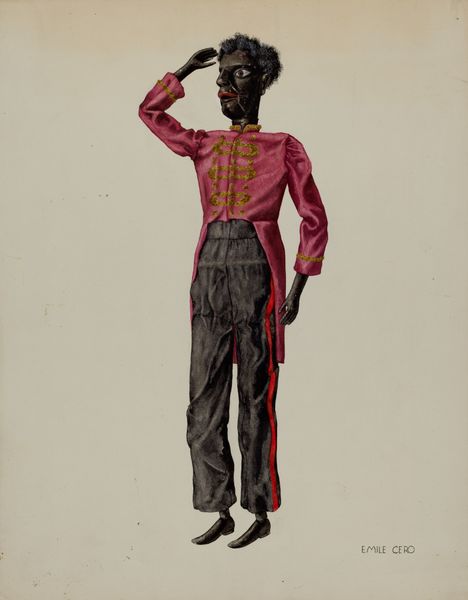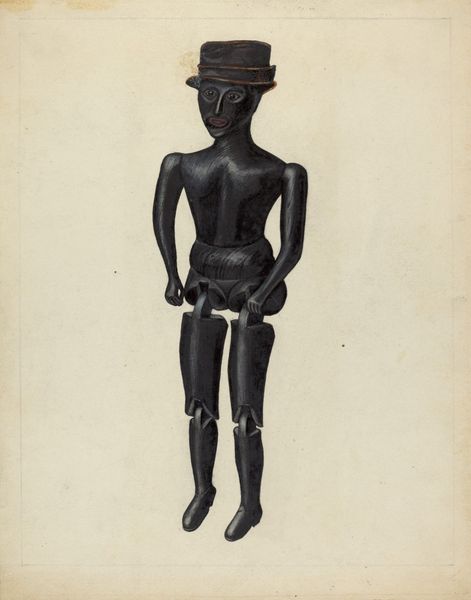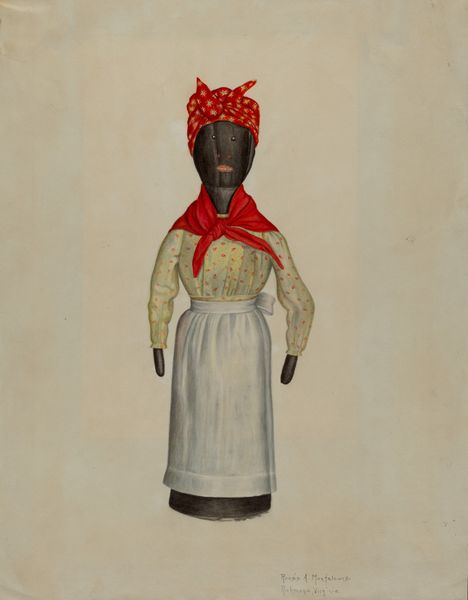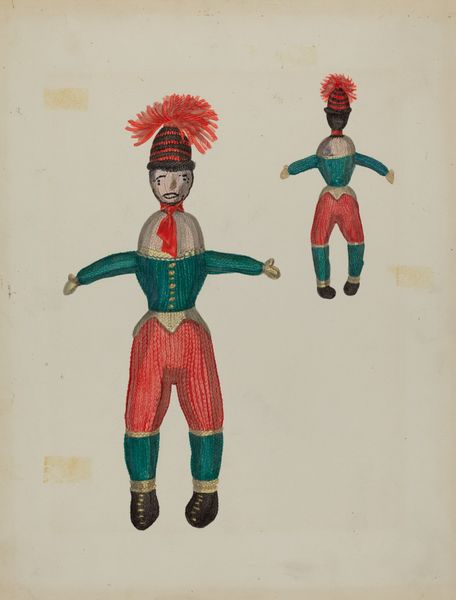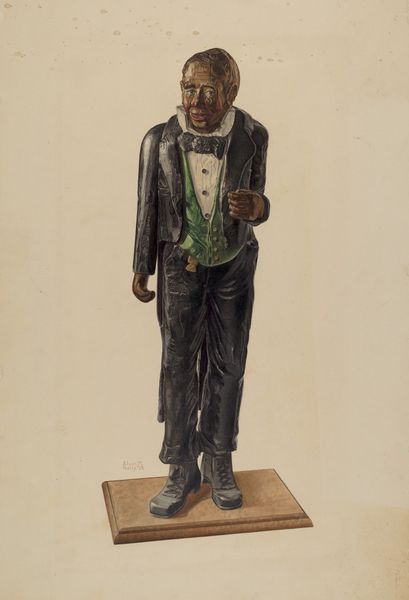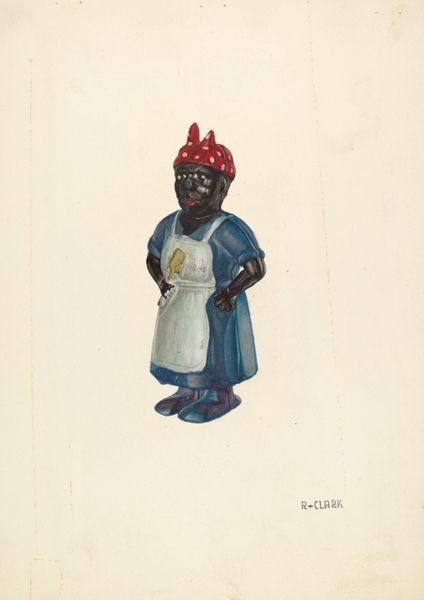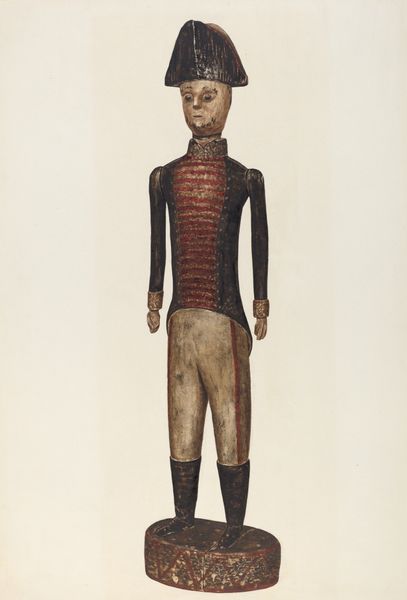
drawing
#
portrait
#
african-art
#
drawing
#
caricature
#
caricature
#
historical fashion
#
framed image
#
genre-painting
Dimensions: overall: 35.7 x 28 cm (14 1/16 x 11 in.) Original IAD Object: 42 3/4" high
Copyright: National Gallery of Art: CC0 1.0
Curator: This is Verna Tallman's "Minstrel Puppet," created around 1937. It's a striking drawing. What are your initial thoughts? Editor: Unease, primarily. It's...stark. That figure, swallowed by the black of its attire, and the way the features are rendered is unsettling, like a mask barely concealing something. Curator: Absolutely. Minstrelsy, as a performance tradition, carries a deeply problematic history of racist caricature. The exaggerated features, the wide grin – it’s a direct echo of those stereotypes. Editor: The elegance of the suit jars against it, doesn’t it? Like trying to dignify the demeaning. Is there anything in Tallman’s background that gives us insight into her motives here? Curator: She worked extensively documenting folk art and crafts, particularly in the South. So she was very interested in representations of Black culture and African-inspired forms of artistry and craft at the time. One perspective might be that she was attempting to capture or critique this particular aspect of popular entertainment. The drawing feels like more than just documentation. There’s a quiet sadness there too. Editor: That makes me think, is it capturing a disappearing cultural form or something more? Its a puppet. Curator: Exactly! Is the puppet standing in for something, maybe speaking to cultural attitudes that are just under the surface? What stories were being told with puppets back then, and how did these narratives influence perceptions of Black people and racial identity? Editor: And there’s the question of audience, too. Who would this have been shown to, what feelings did it evoke, was the intent as ambiguous then as it feels now? I'm caught between its potential as a historical document and my repulsion to some of the imagery it depicts. Curator: That tension is at the heart of it, I think. It's a powerful and disturbing artifact that compels us to confront uncomfortable truths about our past. It demands introspection on historical context. Editor: A potent reminder that what's visible on the surface is never the whole story. There is more to it if one bothers to see it and understand it.
Comments
No comments
Be the first to comment and join the conversation on the ultimate creative platform.
